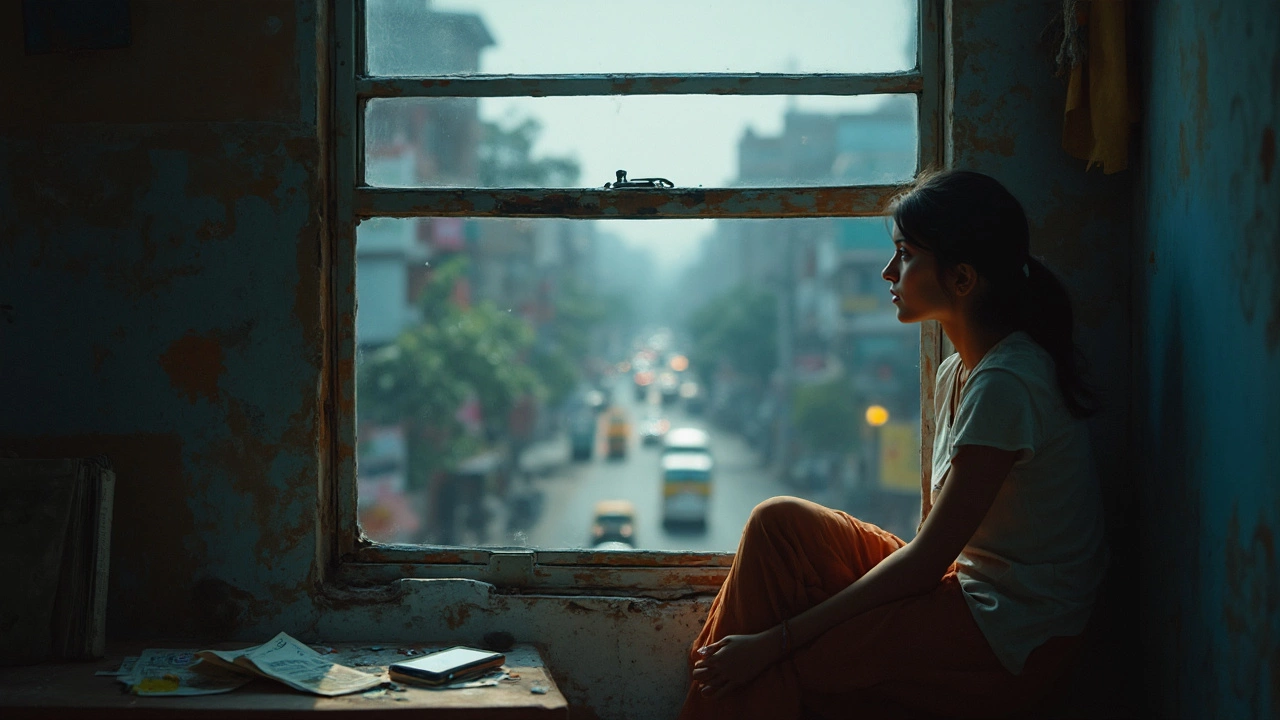If you’ve ever thought, “Do I need therapy?” you’re far from alone. The real kicker? Around the world, hundreds of millions should probably see a therapist—but only a fraction ever do. In the U.S., for example, recent numbers show about 1 in 5 adults live with a mental illness, but less than half of them get any kind of professional treatment. That’s not just a U.S. problem either. Globally, the World Health Organization says up to 70% of people with mental health issues miss out completely on therapy or care.
Why such a huge gap? It’s not that people don’t want help. For a lot of folks, therapy seems out of reach for all sorts of reasons—money, time, fear, social stigma, you name it. Even finding a good therapist with an open slot in your area can feel impossible. And for some, the idea of talking about personal stuff to a total stranger is just too weird or scary.
This is way more common than you might think. If you’re feeling stuck or overwhelmed and you haven’t reached out for help, you’re definitely not the only one in that boat. But there are small, doable steps you can take to move forward—some are even free.
- How Many Go Without Help?
- Why the Gap Is So Massive
- Everyday Barriers People Face
- Who's Missing Out Most?
- The Real-Life Risks
- How to Push Past the Blockers
How Many Go Without Help?
This one’s a shocker—when you actually look at the numbers, way more people skip therapy than you might guess. In the United States alone, the National Institute of Mental Health reports that while almost 58 million adults experienced mental illness in 2023, only about 27 million actually got any kind of treatment. So, that’s more than 30 million adults who needed help, but didn’t get it just last year. That’s not even counting younger folks, who often get overlooked.
If you step outside the U.S., the gap gets even wider. According to the World Health Organization, about 70% of people with a diagnosable mental health issue worldwide never get any type of professional care or counseling. Some countries, especially those with fewer resources, report wait times of a year or more—if therapy is available at all.
| Country | People Needing Therapy (%) | Getting Therapy (%) |
|---|---|---|
| USA | 21 | 48 of those in need |
| UK | 20 | 39 of those in need |
| India | 13 | 10 of those in need |
Notice how the numbers don’t even come close to matching up. Even in places better off, only half or less actually get some form of mental health support. It’s worse for young people; teenagers report some of the highest rates of anxiety and depression, but most go without any form of mental health help.
So if you’ve been feeling like you’re on an island, you’re not. Millions are right there with you, wanting help but not getting it for reasons that usually have nothing to do with personal choice.
Why the Gap Is So Massive
There’s a lot standing between people and mental health therapy, and it’s not just one thing. Money is the first and biggest hurdle for most people. In the U.S., for example, the average cost for a private therapy session is about $100 to $200. Many insurance plans barely cover mental health care—or skip it altogether. So, even if someone wants help, paying for it feels impossible.
Then there’s the shortage of therapy providers. In a 2023 survey, over 65% of people looking for a mental health provider said it took them more than a month to find someone with an opening. Some areas, especially in rural towns, just don’t have enough therapists—or any—so you might drive for hours or have to settle for waiting lists that stretch out for months.
Stigma is a big deal, too. People worry they’ll be judged, especially men and those in communities where talking about mental health is still kind of taboo. In some cultures, seeing a therapist is seen as a sign of weakness, not strength. That keeps a lot of folks suffering in silence rather than reaching out.
Transport, busy schedules, and even language barriers all pile on top. Sometimes, it’s just the hassle of figuring out where to even start—or the fear of talking about tough stuff out loud—that makes people keep putting it off. Add it all up, and you get millions falling through the cracks.
| Barrier | Percentage Affected (US Adults, 2023) |
|---|---|
| Cost/No Insurance | 45% |
| No Available Providers | 27% |
| Stigma/Fear | 24% |
| Time/Logistics | 19% |
So when you see how high these numbers are, it makes sense why so many people who really need therapy aren’t getting it. If any of this sounds familiar, you’re definitely not the only one.
Everyday Barriers People Face
So, why don’t more people get mental health therapy? It usually boils down to a handful of everyday headaches that make it feel impossible. One biggie is cost. According to the National Alliance on Mental Illness, nearly half of U.S. adults who didn't get the help they needed in the past year said money was the main reason. Therapy sessions can range from $100 to $250 an hour without insurance—and tons of insurance plans either don’t cover enough sessions or don’t cover therapy at all.
Another roadblock? Finding someone who's actually taking new clients. Even if you have insurance, getting an appointment might mean a months-long wait. In 2023, a Mental Health America survey showed that around 30% of people needing mental health care had trouble even finding a provider.
| Barrier | % Impacted (U.S.) |
|---|---|
| Cost | 48% |
| Provider shortage/wait times | 30% |
| Stigma/shame | 28% |
| Lack of transport/access | 19% |
It’s not just cash and calendars. Stigma is a big deal, too. Some people worry they’ll look weak if they admit they need help, or they’re scared people at work will find out. A 2021 CDC report says nearly one in three people avoid mental health care because they don’t want others to judge them. Here’s how the American Psychological Association puts it:
"Stigma remains a major hurdle, keeping many people from even considering therapy until their situation gets critical."
Practical stuff can get in the way as well. Maybe you live in a small town where there’s no therapist for 40 miles. Or you don’t have reliable transport, or your shifts at work are unpredictable, so you can’t ever lock in an appointment time. And for parents, lining up childcare to make it to a session can be its own nightmare.
- Cost and health insurance problems
- Long waitlists or no local providers
- Fear of being judged (stigma)
- No transport or time conflicts
- Childcare or other family demands
All these barriers stack up. It's no wonder so many people who need therapy just never get around to it, even if they want to.

Who's Missing Out Most?
Way too many people who actually need mental health help just never get it, and it’s not spread out equally. There are a few groups you’ll see getting missed over and over again.
First, young adults and teens are falling through the cracks in a big way. It’s weird, because the pressure on this group is sky-high—school, social stuff, the internet—and yet, less than 30% of teens with mental health issues in the U.S. get the therapy they need. The numbers aren’t much better in most other places either.
Now, if you look at people of color or immigrants, the gap gets even bigger. Black, Latino, and Asian folks are all less likely to get help, sometimes by more than 50% compared to white adults. Add language barriers, money problems, and fear of being judged by family or friends, and it’s easy to see why.
Rural areas? They’ve got it rough, too. In the U.S., over 60% of rural counties don’t have a single psychiatrist. No car, no cash, or spotty internet? Therapy can feel out of reach.
Here’s a table to give you an idea how it often breaks down:
| Group | Got Therapy Last Year | Needed, But Didn’t Get It |
|---|---|---|
| Teens (13-18, U.S.) | ~30% | ~70% |
| Black Adults (U.S.) | ~25% | ~75% |
| Rural Residents | ~30% | ~70% |
| Asian Adults (U.S.) | ~20% | ~80% |
Pretty much, if you’re young, a person of color, living outside a big city, or dealing with money issues, the hurdles are stacked even higher. This isn’t just unfair; it means a lot of people are struggling way more than they have to, all because of obstacles that could actually be fixed.
The Real-Life Risks
Missing out on mental health therapy isn’t just a minor thing—it can have a serious impact. When people need therapy but don't get it, everything from daily routine to long-term health can take a hit. For starters, untreated anxiety, depression, and other conditions are strong risk factors for stuff like job loss, relationship problems, and even physical sickness. A CDC study found that people with mental health struggles are two to three times more likely to have chronic diseases like heart issues or diabetes.
It’s not just about statistics—this plays out in real life. Think of missed days at work or school, trouble sleeping, and constantly feeling on edge. In some cases, things can spiral: folks who don’t get help are at a higher risk for substance abuse, self-harm, or worse. Suicide remains a leading cause of death in young adults, and untreated mental health is a big piece of that puzzle.
Here's a quick look at some actual numbers just to drive it home:
| Issue | Risk Without Therapy |
|---|---|
| Job Loss | 2x more likely |
| Chronic Disease | Up to 3x higher |
| Suicide Risk | 4x for severe depression |
Those gaps don’t just affect individuals—families feel the pressure, too. Kids living with a parent who needs but doesn’t receive therapy are more likely to struggle in school or develop their own mental health issues down the road. The ripple effect is real.
So if you’ve been putting off reaching out for help, know that taking steps toward therapy isn’t just about feeling better temporarily. It’s about lowering the risks that can pile up slowly over time—often without you even noticing.
How to Push Past the Blockers
Let’s get real: reaching out for mental health help can feel impossible, but it doesn’t have to be a giant leap. Most folks who finally start therapy say the toughest part was taking that first action—sometimes it's just sending one email or making a single phone call. The American Psychological Association points out, “Finding help is easier now than ever before, but many still don’t know where to start.”
“Mental health problems are common, and treatment works. But about 57% of adults with a mental health condition did not get mental health services in the past year.” — National Alliance on Mental Illness (NAMI)
If cash is tight, don’t rule out therapy. Lots of communities offer sliding-scale, low-cost, or even free options. Your workplace might have an Employee Assistance Program (EAP) you never used. And universities often have counselors on staff for students and sometimes local residents too.
- Try telehealth: Many therapists now work online, so you skip travel headaches and have way more choices.
- Ask your doctor: Even a regular checkup is a good time to bring up therapy and mental health. Docs can point you in the right direction.
- Check local resources: Community centers, nonprofits, and even apps offer support groups or peer counseling.
- If talking to a stranger feels too much, start by texting support lines. Sometimes just writing it out is easier.
Here’s a quick look at common reasons people don’t get therapy, based on a 2023 report:
| Barrier | Percent Reporting |
|---|---|
| Cost | 37% |
| Couldn't find a provider | 21% |
| Worried about others finding out | 16% |
| Didn't have time | 13% |
If you’re up against stigma—maybe friends or family just don’t get it—try not to let their opinions control your life. Plenty of people who felt totally alone now swear by the help they got once they reached out. Remember, you’re actually being strong by taking that step.



